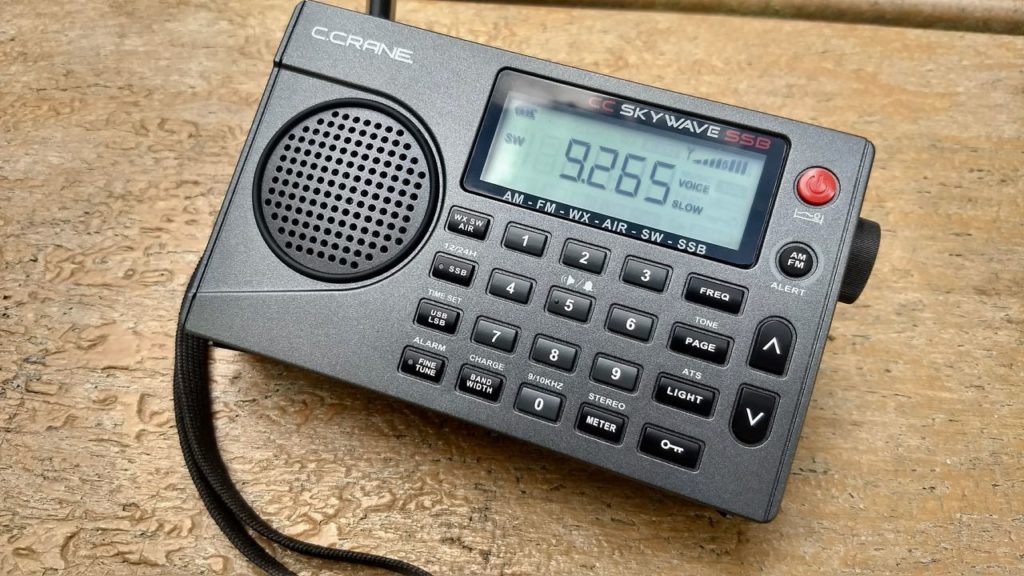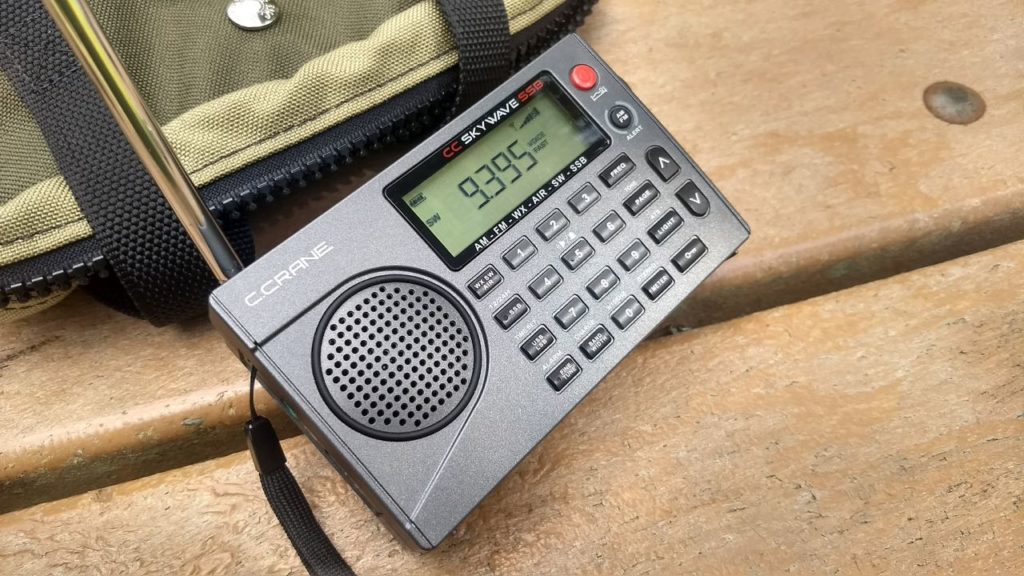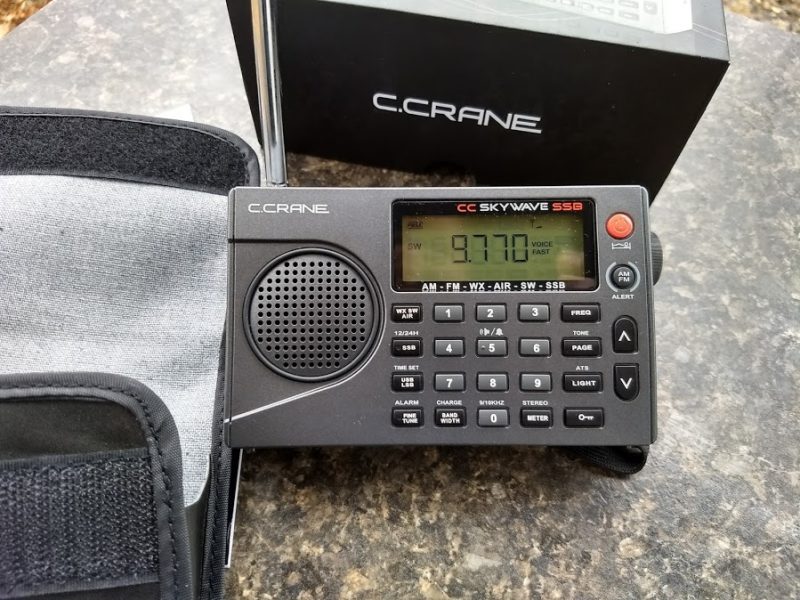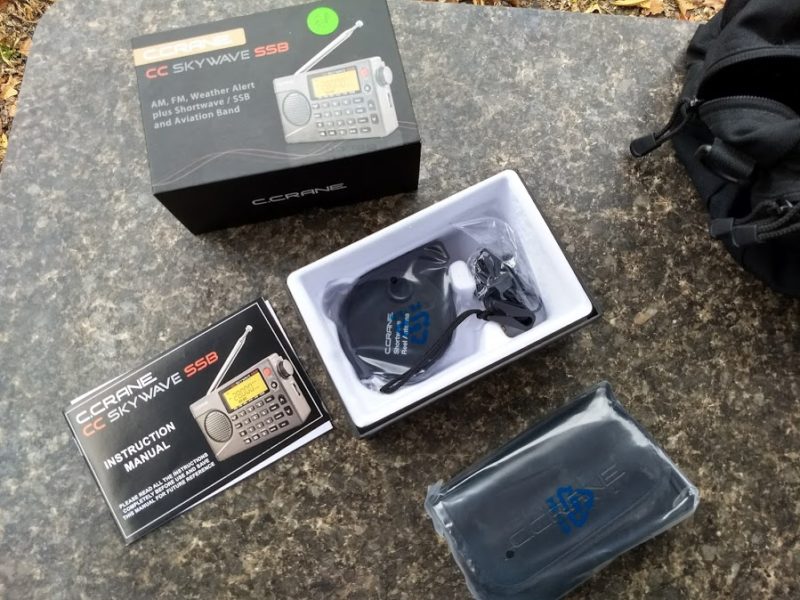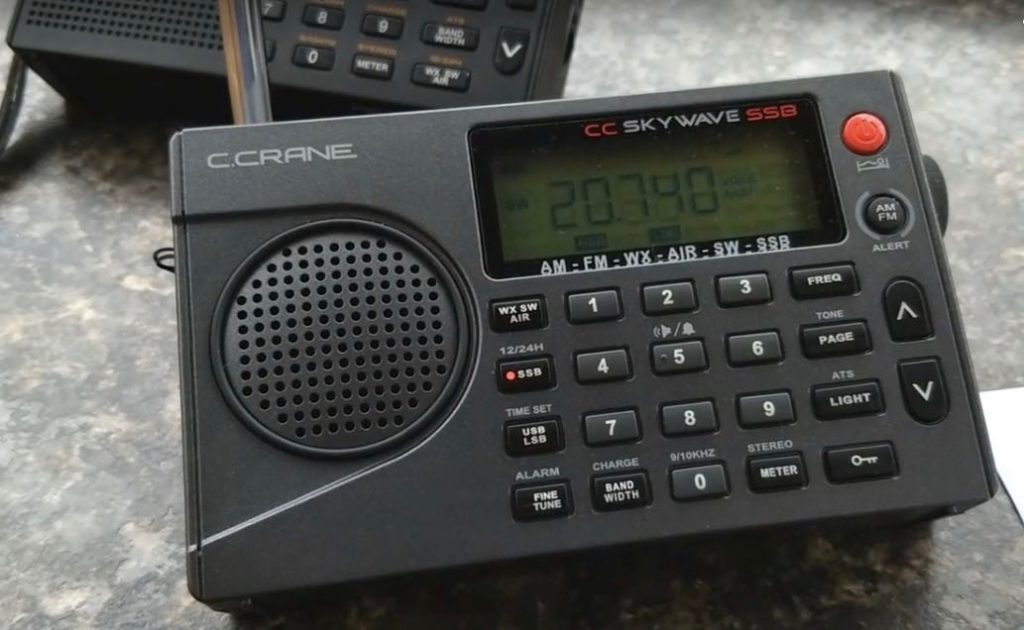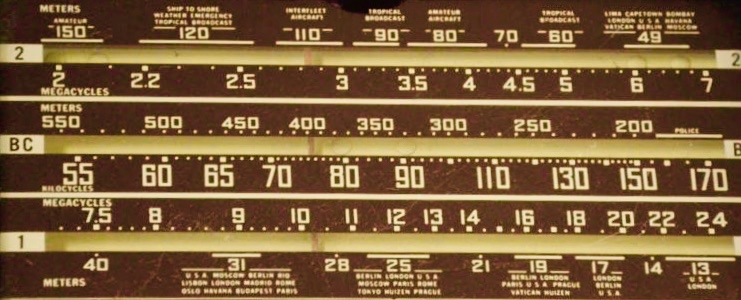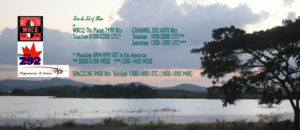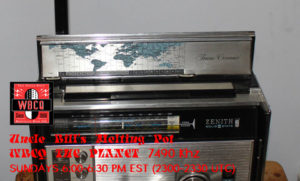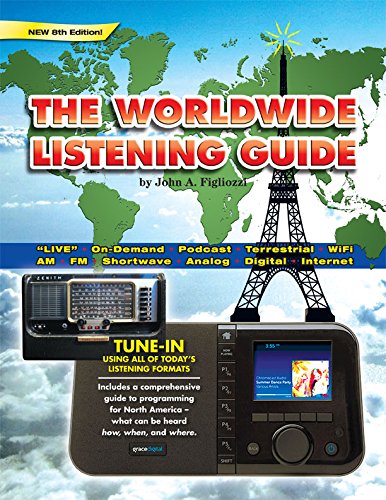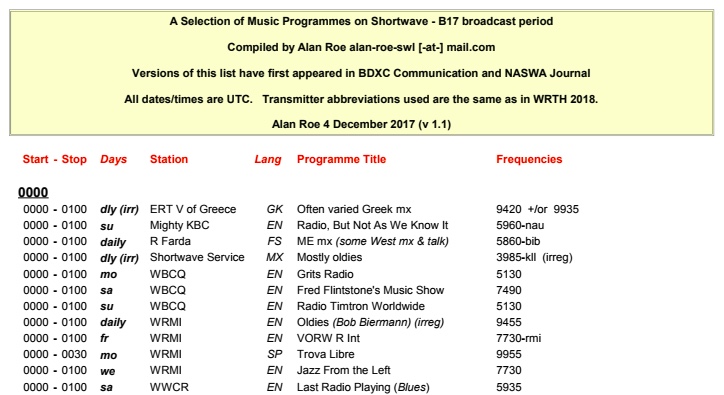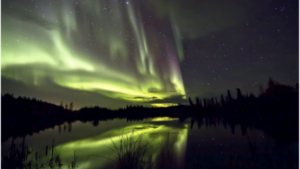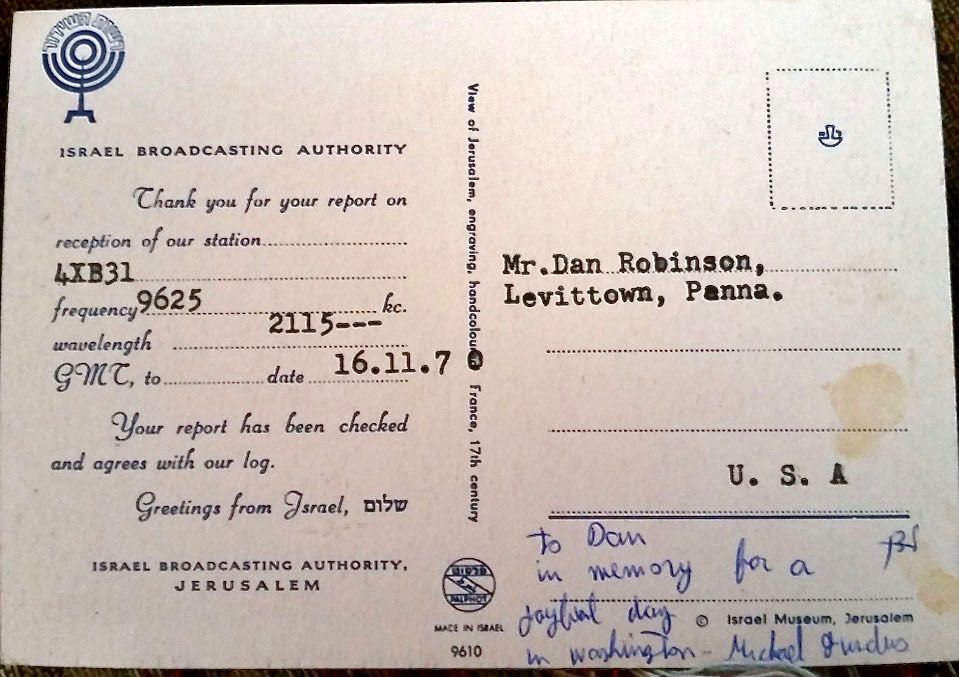[IMPORTANT UPDATE (October 21, 2018): Please note that C. Crane have addressed issues that I found in the first production run of the CC Skywave SSB. Click here to read the update and click here to read my full review of the CC Skywave SSB.]
Just last month, the little radio that I found most exciting this year hit the market: the C. Crane CC Skywave SSB.
Why the appeal for me? Frankly, since I do most of my portable radio listening while traveling, and since I typically travel out of one bag, having a compact radio with performance and features is an absolute must in my world. Up to this point, the original CC Skywave is the radio I often choose when traveling, as it packs so many useful features: AM, FM, Shortwave, AIR band, Weather Radio, and like any good travel radio, clock, alarm, and sleep functions, lacking only SSB mode. So it goes without saying that I was excited to see its newest edition.
The CC Skywave SSB
What follows is an account of my experience evaluating CC Skywave SSB production units, and a brief summary of their performance.
My hope is that this summary review will help readers with purchase decisions. Note that this is merely preliminary to an extensive, unabridged review that will appear in a future issue of The Spectrum Monitor magazine, then in the SWLing Post the following month.
Pre-production Skywave SSB
As many readers know, I was sent a pre-production model of the Skywave SSB for evaluation this summer.
As I mentioned in my sneak peek and reiterated to a number of inquisitive readers: I never base a product review or comment upon pre-production radios. I don’t comment about the performance of the pre-production model for an obvious reason: pre-production radios are quite simply not the versions that ship to customers upon the product release.
Now that the production model has been in the wild for a few weeks, I feel more at liberty to talk about my experience with the pre-production Skywave SSB.
In short: I have been very pleased, indeed, with the pre-production model’s performance. In terms of features, it is a nice incremental upgrade from the original Skywave. In terms of performance, it’s also tweaked in the right direction. As an early adopter of the original Skywave, I’ve been truly enthusiastic about this evaluation pre-production model.
All the notes I took while evaluating the pre-production Skywave SSB were made for C. Crane so they could hopefully implement any changes or address concerns prior to starting the first production run. But the truth is, I found the pre-production model in my possession to be quite solid, so my suggestions were minor.
Putting my pre-production model aside, I ordered an actual production unit on C. Crane’s website just like everyone else.
C. Crane kindly dispatched my unit as soon as they received the first production batch from the factory so I could get to work on the full review.
Quirks with the first production units
I was eager to get started on the review of the Skywave SSB, so as soon as I received it, I did what I always do: compared it with other radios.
I make my comparisons, by the way, at least fifty yards from my house to separate the radios from any inadvertent sources of local noise.
Production Radio #1
My first comparison was with the Digitech AR-1780 and the original CC Skywave. I quickly noted that the Skywave SSB was very slightly less sensitive than the other radios. I had tested the pre-production unit enough to know that the Skywave SSB’s performance should at least be on par with the original Skywave.
Upon careful listening, I discovered the production unit had a very faint, internally-generated whine on some of the shortwave bands; when tuned to marginal signals, this whine manifested itself as variable background noise. Between signals it was audible as a faint background whine, hardly noticeable. With that said, the whine was most notable while tuning––since the Skywave SSB mutes between frequency changes, the whine was most conspicuous during audio recovery.
The pre-production unit had no trace of an internally-generated whine. Audio was very clean in comparison.
Here’s a sample of the first production radio being tuned down from 10,000 kHz in 5 kHz tuning steps:
Here’s a sample from the pre-production unit:
Hear the whine in the first sample? Yes, so do I.
I contacted C. Crane promptly, and to their credit, they immediately dispatched another unit from inventory, via UPS Next Day, along with a return label to send my faulty unit back to their engineering team.
Production Radio #2
The second unit arrived while I was on Thanksgiving vacation, but was sent to me directly at my hotel. The day I received the replacement Skywave SSB, I put it on the air. The first listening session with it, alone, revealed that this unit did not have the internally-generated whine, however, this unit had issues with sensitivity. All of my comparison receivers were outperforming this Skywave SSB on the shortwave broadcast bands. When I compared it with the pre-production Skywave SSB unit and the first production unit, the second production unit was about four to five S-units less sensitive. Odd.
I sent both production radios back to C. Crane with detailed notes and sample recordings. Their engineering team confirmed my findings and started looking into the variations in QC and double-checking their inventory to make sure none shipped with these problems.
Production Radio #3
A few days later, I was sent a third production unit. After putting it on the air, I immediately noticed the same faint noise characteristics of my first full production unit, which is to say, the notorious whine.
Once again, I contacted C. Crane. This time, I requested that no less than three radios be sent to me, and they kindly expedite the request.
Production Radios #4, #5, and #6
Yesterday, I tested all three radios. What follows is a quick assessment of those radios:
Performance
In a nutshell, the three production units I tested yesterday performed better than my second and third production radios on all bands. Strictly in terms of sensitivity, these were on par with the pre-production unit. Very good.
But with that said, even the last three production units I received had internally-generated noises that I couldn’t help but notice. Disappointing.
At this point, I must assume these noises are prevalent throughout the first production run since all but one of the six CC Skywave SSB production units I tested have it. Meanwhile, the only one that didn’t have the noise had serious sensitivity issues.
Noises
Yesterday, I spent two full hours searching for birdies (internally generated noises) and other anomalies on the three CC Skywave SSB production units I received Monday. Each radio’s noise location varied slightly (within 20-40 kHz). The following locations are roughly the average of frequencies:
Birdies
Birdies are a fairly common occurrence among sensitive receivers, and the CC Skywave SSB has about an average number. The birdies I noted are outside the space where I do my broadcast listening:
- 2,305 kHz
- 9,220 kHz
- 11,520 kHz
Background audio whine/tone
All of the production units (save Radio #2) have a very slight audio whine present––either via the internal speaker or headphones––on certain portions of the spectrum.
In my first full production unit, I believe this whine may have slightly affected the unit’s overall sensitivity. On the last three production units, it didn’t seem to have as much of an impact on overall sensitivity.
The whine is still there, however, and occasionally when tuned to a weak signal within one of these zones, other faint sweeping noises could be detected in the background.
Sometimes it’s even more noticeable when the broadcaster is weak and is located within one of the whine zones. Here’s an example of 10 MHz WWV time station comparing the original Skywave with the Skywave SSB. Note that yesterday we had terrible propagation due to a geo storm, so WWV was very weak indeed.
Listen for the sweeping tones:
Here are the frequency ranges where I noted the background whine:
- 7,830 – 8335 kHz
- 8,610 – 8,690 kHz (note: very faint)
- 9,770 – 10,415 kHz
- 11,585 – 11810 kHz
Another oddity is a noise I found prevalent on CHU Canada’s 7,850 kHz frequency. I’m guessing it may be due to the combination of a DSP birdie on top of a relatively strong broadcaster.
Here’s a video comparing the original Skywave with one of the production models:
I noted no birdies or noises on the mediumwave band. The FM, AIR band, and Weather frequencies perform beautifully.
Summary: The bad news––and the good
At the moment, it appears the first production run of the CC Skywave SSB has some challenging QC issues. Therefore, unfortunately, I can only recommend it at present if you’re willing to check your unit very carefully for any of the internally-generated noises I noted above.
If, however, you’ve already purchased a Skywave SSB and have noticed the noises, then please contact C. Crane. I’ve been a C. Crane customer for many years and I’m confident they will take care of your issue.
This being said, the truth is, I sympathize with C. Crane. It must be challenging to get things right and truly consistent on the first production run of a radio––especially on a tiny compact radio like the Skywave SSB. It must be especially hard to keep noises out of the audio chain when so much is crammed into such a tiny package.
I fully suspect these issues will be sorted out in the second production run which, of course, I will test and review.
But the good news, and it’s sincerely good news, is this: if C. Crane can produce a CC Skywave SSB as good as the pre-production unit, they’ll truly have a winner. So let’s keep our fingers crossed that C. Crane can do it again…and again.

